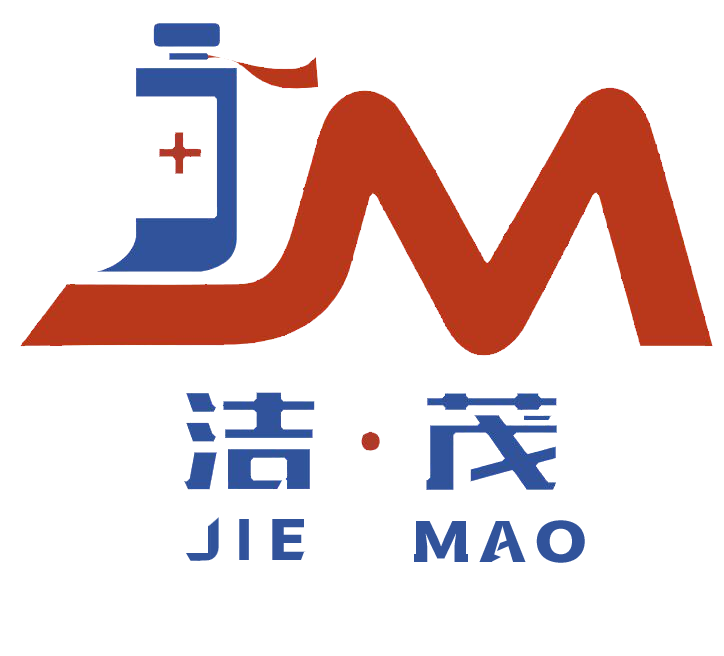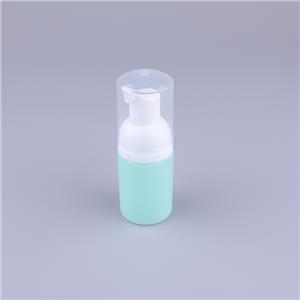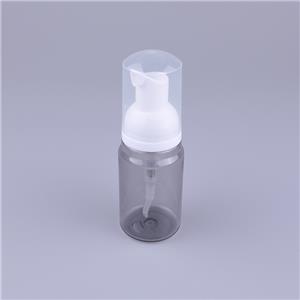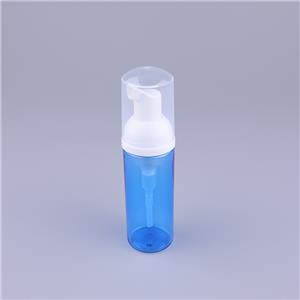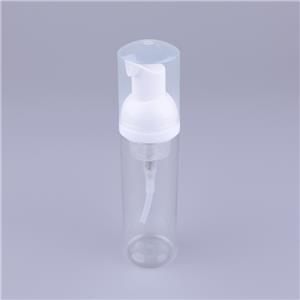- Home
- >
- News
- >
- Public Information
- >
- The application of PET in the food industry
The application of PET in the food industry
1、 Overview of PET materials
PET, also known as polyethylene terephthalate, is a common thermoplastic. It is made by chemical condensation reaction of terephthalic acid and ethylene glycol. PET has many excellent properties and is commonly referred to as "polyester" in fiber applications, while it is called PET or PET resin when used for other purposes such as containers.
2、 The advantages of PET application in the food industry
Excellent barrier performance: PET can effectively block the invasion of oxygen, moisture, and odors. For food, this means that it can greatly extend its shelf life, reduce the risk of food spoilage due to reactions with oxygen, water vapor, and other substances in the external environment, and ensure that consumers can taste fresh food. For example, juice packaged in PET can effectively prevent oxygen from entering and causing oxidation of the juice, maintaining its original color, flavor, and nutritional content.
High transparency: Plastic products made of PET have extremely high transparency, as clear as crystal, allowing consumers to have a clear understanding of the food inside the packaging. When packaging candy, transparent PET packaging can fully display the shape and color of the candy, greatly enhancing the visual appeal of the product and helping to stimulate consumers' desire to purchase.
Good strength and toughness: PET material has high strength and good toughness, while ensuring lightweight packaging, it can also withstand a certain degree of compression and collision, and is not easily broken or deformed. This feature can effectively reduce product loss caused by packaging damage during the transportation and storage of food, saving food companies a lot of costs.
High safety: PET has been approved by the US Food and Drug Administration (FDA) and numerous global health and safety agencies for safe use in contact with food and beverages. After extensive research, regulatory approval, testing, and over 30 years of widespread use, its safety has been repeatedly verified. Moreover, PET does not contain bisphenol A (BPA) or phthalates (plasticizers), so consumers do not need to worry about the migration of harmful chemicals into food.
Strong recyclability: PET is a material with high recycling value, which conforms to the environmental protection concept advocated by current society and the trend of sustainable development. After processing the recycled PET, it can be used to manufacture various products such as new PET bottles, fibers, carpets, industrial strapping, etc., which helps reduce the pollution caused by packaging waste to the environment and promote the development of the packaging industry towards a green direction.
3、 Specific application scenarios of PET in the food industry
Beverage packaging: PET is widely and typically used in the field of beverage packaging. Approximately 70% of juice bottles, soft drink bottles, dilutable beverage bottles, and water bottles worldwide are made of PET plastic. PET bottles can effectively retain the carbon dioxide gas in carbonated beverages, preventing it from escaping and ensuring that the beverage always maintains sufficient carbonation and taste. In addition, its bottle body design can be optimized according to ergonomics, making it easy for consumers to grip and drink.
Edible oil packaging: Due to its good barrier properties, PET can effectively prevent the oxidation and rancidity of edible oil caused by contact with oxygen, so it is also widely used in edible oil packaging. Some PET olive oil bottles can also be specially designed, such as NOVAPET's PET olive oil bottle with a handle, which uses specially formulated materials and combines specific extrusion blow molding technology to meet consumers' ergonomic design needs while ensuring 100% recyclability, providing an ideal choice for edible oil packaging.
Baking food packaging: Food grade PET plastic cans or boxes are commonly used to package baked goods such as cookies and cakes. Its good sealing and moisture resistance can keep cookies crispy and extend their shelf life. At the same time, transparent PET packaging can fully showcase the exquisite appearance of baked goods, attract consumers to purchase, and its lightweight feature is also convenient for consumers to carry and store.
Sauce and seasoning packaging: Sauce and seasoning such as soy sauce, vinegar, salad dressing, etc. are often packaged in PET. PET can resist the chemical attack that certain ingredients in these foods may cause, while maintaining their flavor and quality stability. Its packaging specifications can also be flexibly designed according to different consumer needs.
Fresh vegetable and fruit packaging: Some fresh vegetables and fruits are packaged in PET plastic boxes, which can provide certain protection for the vegetables and fruits, preventing them from being crushed and damaged during transportation and sales. At the same time, the transparency of PET makes it convenient for consumers to choose fruits and vegetables, and it can also maintain proper respiration of fruits and vegetables by setting up breathable holes on the packaging, thereby extending their shelf life.
4、 Relevant safety regulations for the application of PET in the food industry
Internationally, the FDA has approved PET for food and beverage packaging, confirming its safety compliance with relevant standards. In the European Union, the Food Contact Recycled Plastics Regulation (EU) 2022/1616, which came into effect on October 10, 2022, provides a new legal basis for the use of recycled plastics in food contact. The regulation specifies that only recycled plastics produced using "appropriate recycling technologies" can be used for food contact. The authorized appropriate recycling technologies include physical recycling rPET technology and closed-loop recycling plastic technology. It also stipulates that from July 10, 2023, only recycled plastics produced using appropriate recycling technologies can be put on the market. On July 30, 2024, the European Food Safety Authority (EFSA) also released a safety assessment and application scientific guide for the physical regeneration process of post consumer PET for food contact materials to guide the implementation of the regulation.
In China, there are also corresponding national food safety standards that regulate plastic materials and products used in food contact, ensuring that PET and other materials meet hygiene and safety requirements when used for food packaging and other purposes, and safeguarding consumers' physical health.
5、 The sustainable development trend of PET in the food industry
The application and promotion of recycled PET: With the increasing awareness of environmental protection, the application of recycled PET (rPET) in food packaging is receiving more and more attention. For example, Wild&Coco's "CocoGuard Shots" uses 100% rPET bottled coconut drinks, which not only significantly reduces weight compared to traditional glass packaging, but also significantly reduces energy consumption and carbon dioxide emissions during the packaging process, achieving good environmental benefits.
Research and application of biobased PET: Some companies have begun to devote themselves to the research and use of biobased PET. Biobased PET is produced using renewable resources as raw materials, such as converting them into bio MEG through CO2 emission fermentation, which is then used to produce PET. This helps to further reduce dependence on traditional petrochemical resources and reduce carbon footprint. Companies like Bormioli Pharma in Italy collaborate with related enterprises to produce carbon capture PET bottles for pharmaceutical packaging. This packaging reduces 21.9% of carbon dioxide emissions compared to traditional PET and has performance comparable to standard PET. It is expected to have more applications in the food packaging field in the future.
Packaging design optimization: While meeting packaging functions, food companies and packaging manufacturers are also continuously optimizing the design of PET packaging to further reduce the use of packaging materials. For example, adjusting the shape, thickness, and other parameters of packaging reasonably can reduce the weight of packaging without affecting the food protection effect, thereby reducing raw material consumption and energy consumption in transportation and other links, and improving the sustainability performance of the entire food packaging industry chain.
6、 Challenges faced by PET application in the food industry
Impurities in the recycling process: In the PET recycling process, waste materials are often mixed with other plastic impurities such as polycarbonate (PC), which is the main source of bisphenol A. Under high temperature conditions, bisphenol A will precipitate from PC, contaminating PET recycled materials and affecting their purity and safety when used for food grade applications. Although there are technologies such as near-infrared (NIR) detection used for sorting, due to the difficulty of precise sorting of PC and some modified PC materials that are similar in appearance and spectral characteristics to PET using ordinary NIR technology, there may still be situations where bisphenol A exceeds the standard even after multiple sorting processes.
Cost factor: Although PET has many advantages, in some cases, especially for some food products that are sensitive to packaging costs, using PET packaging, especially bio based PET or recycled PET packaging that has undergone complex recycling processes, may have higher costs than traditional packaging materials, which to some extent limits their wider and faster promotion and application.
